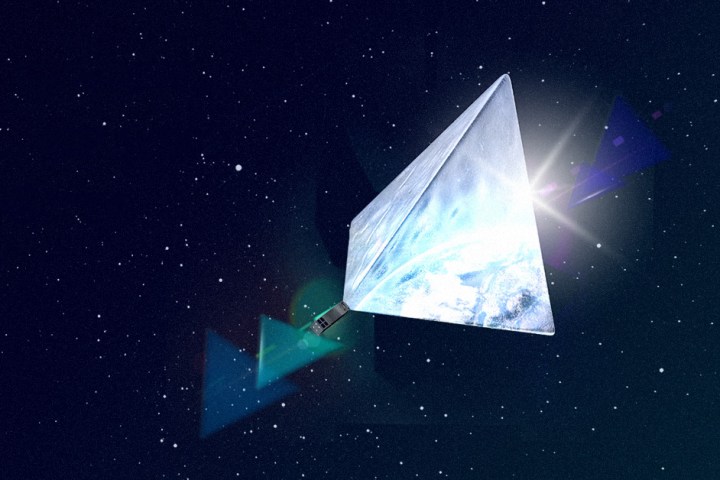
You can’t see most of these satellites from Earth, but for the next month a smallsat developed by students at the Moscow Polytechnic University may be visible to the naked eye. In fact, if all goes well for the team behind the project, it will be the second brightest object in the night sky, second only to the Moon.
It’s an ambitious, largely crowdfunded endeavor led by a Russian advertising agency 12.digital that says its goals are to inspire interest in space, test science instruments, and perform a bit of advertising for its biggest investor. See the promotional video below for an overview of the project, even if you don’t speak Russian.
“Space is not so far away,” Alex Panov, one of the project leads, told Digital Trends. “It’s possible to make cool and interesting engineering projects, even as students and young engineers.”
Panov and his team have called the satellite Mayak, the Russian word for “beacon.” It was launched Friday morning aboard a Russian Soyuz rocket that carried 73 additional satellites, including 47 other smallsats and a large spacecraft that will be used to monitor forest fires. Mayak detached from the rocket in the afternoon and, by evening, is expected to unfurl a large pyramid made of metalized film that will work like a mirror, reflecting light and making the Mayak one of the brightest objects in the night sky.
“It’s possible to make cool and interesting engineering projects, even as students and young engineers.”
The brighter an object appears to us on Earth, the lower it’s apparent magnitude. It’s not clear exactly how bright the Mayak will appear – Panov was hesitant to say — but some reports have claimed it will reflect enough light to shine with an apparent magnitude of -10. To put that in perspective, the Sun’s apparent magnitude is -27, the Moon’s is about -13, and the International Space Station — currently the brightest manmade object in the sky — is nearly -6.
The prospect of such a bright manmade object orbiting Earth is reasonable cause for concern for sky-gazers. But the Mayak won’t be in orbit for long. Part of the mission is to test the pyramid as an aerodynamic braking device to quickly take decommissioned satellites out of orbit — a potential solution to the ever-growing problem of space debris. Once the pyramid opens, the satellite will be dragged back into Earth’s atmosphere, where it will burn up. Panov estimates that if they didn’t open the pyramid it would stay in orbit for 25 years. With the pyramid unfurled, that time decreases to under 30 days.
“The pyramid is like a parachute for satellites,” Panov said. “It’s a small system and if a satellite finishes working, you can press the button on Earth and the parachute will open and cause the satellite to go down to the atmosphere much faster.”
Mayak received a free ride aboard the Soyuz rocket, thanks to support from Russia’s Roscosmos space program. Roughly 60 percent of the project was supported through crowdfunding, with the rest coming from a sponsorship with a banking startup appropriately named RocketBank. For its sponsorship, RocketBank will brand Mayak as the “Cash Back Star” for its 200,000 users. However, 12.digital insists it’s not just about the advertising.
“The pyramid is like a parachute for satellites”
“We’re an ad agency but we realized we’re interested in some technologies and we met some young engineers and decided to work on this project together,” says 12.digital partner, Nik Ershov.
“We don’t want to move advertisement to space,” he added. “We understand that in the future some companies will use space as an area that people can’t avoid. But we’re scared about that. We don’t want to think in that context.”
Nonetheless, it’s tough to deny the potential for space advertising and the Mayak stands as an example of how companies may capitalize on the open space above us.
The satellite will orbit Earth about sixteen times every day, Ershov estimated, and should be visible from regions around the globe. The team has also released an app to help users track the Mayak in real time.
Editors' Recommendations
- Meet the startup aiming to outshine SpaceX with reusable, 3D printable rockets
- SpaceX plan to put 42,000 satellites in orbit could face a big legal roadblock
- SpaceX launches 60 more Starlink internet satellites amid astronomer concerns
- Meet the subversive startup that’s fighting mass surveillance with t-shirts
- SpaceX calls off Starlink launch just 15 minutes before liftoff


